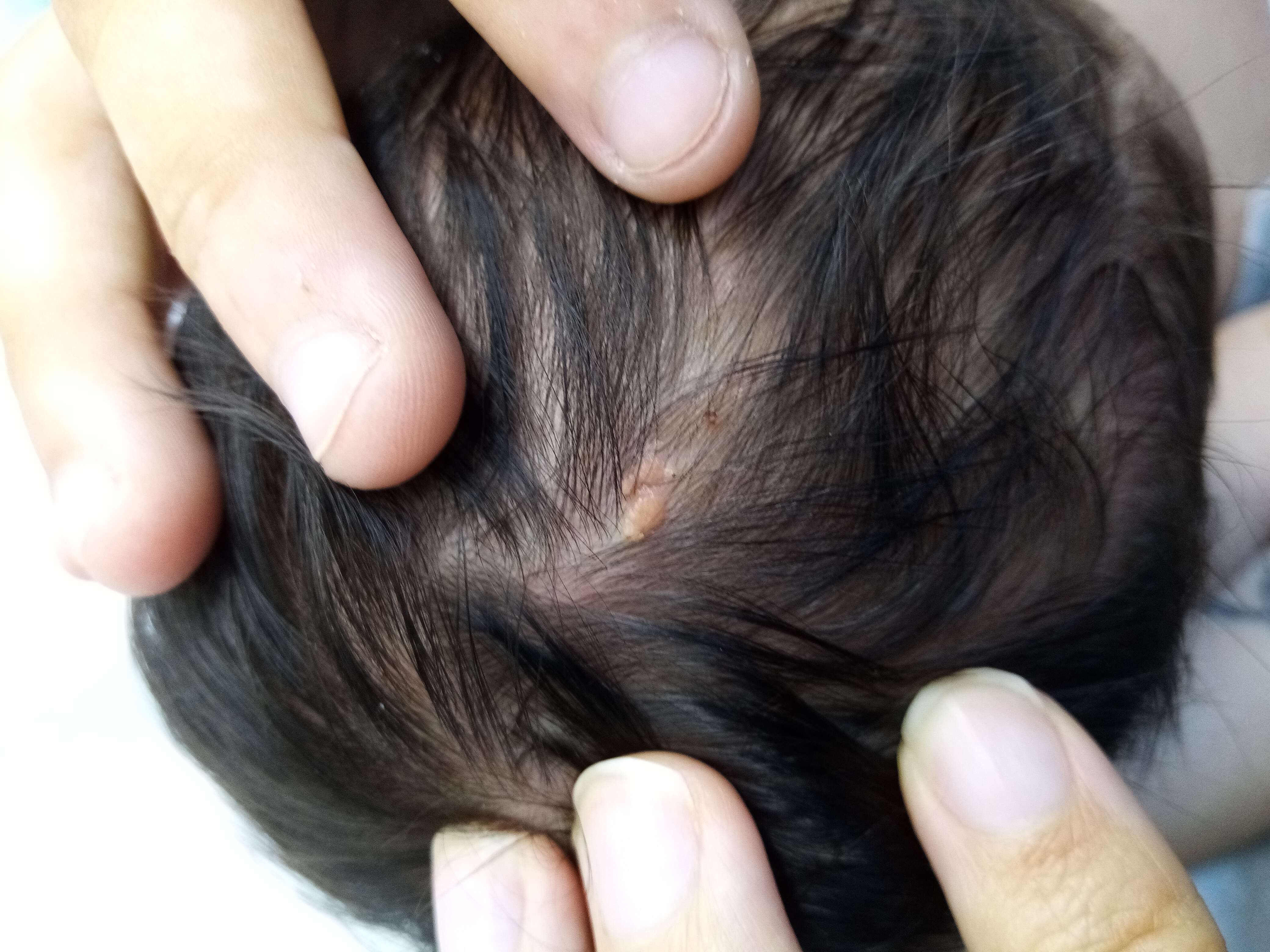
Newborn with an Exophytic Scalp Lesion: A Case Report
2Department of Pediatrics and Neonatology, Centro Hospitalar Universitário de São João, Porto, Portugal
Introduction: evus sebaceous of Jadassohn (NSJ), also known as organoid nevus, is a congenital cutaneous hamartoma, an uncommon birthmark. Typically, the lesion is located on the scalp and presents as a solitary well-defined, yellow-orange, hairless thin plaque. During adolescence, due to hormonal influences, this lesion tends to be more elevated and becomes verrucous or nodular.
Case Report: We report a full-term male born at 40 weeks of gestation by normal spontaneous vaginal delivery, weighing 3680g and Apgar score of 10 at 1 and 5 minutes. Pregnancy was uneventful. Physical examination at birth revealed a lesion on the scalp, located near the sagittal suture, comprised of waxy, yellow-orange, hairless plaques, with 5 mm in maximum diameter. The clinical features were all compatible with the diagnosis of NSJ. Further physical examination did not reveal other abnormalities. A referral to dermatology was made. At 1-month follow-up, the NSJ remained unaltered and the infant is growing and developing normally.
Discussion: This case shows a NSJ comprised of two plaques, unlike the most common presentation of a single one. Generally, the diagnosis is based on clinical presentation and either single or multiple lesions are possible. The typical approach includes clinical and dermoscopic surveillance along with parental reassurance, considering the benignity of the lesion. The development of neoplasms is rare and surgical excision is only recommended in this situation or for aesthetic reasons.

Powered by Eventact EMS